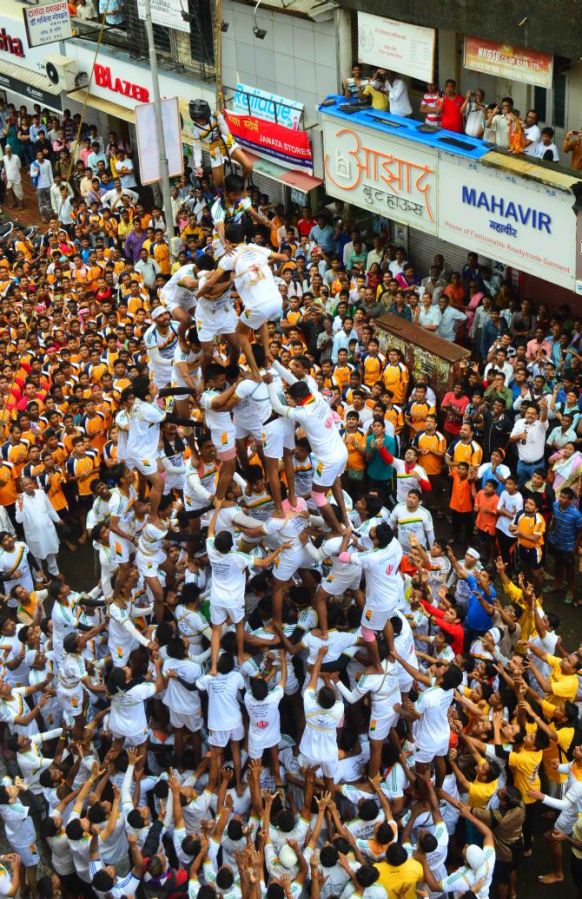 | « Back to article | Print this article |
 The people out on the streets dancing, and those who fall and get injured are from families that cannot afford to lose a day's wages, but often end up losing a limb or life, says N Suresh.
The people out on the streets dancing, and those who fall and get injured are from families that cannot afford to lose a day's wages, but often end up losing a limb or life, says N Suresh.
Since the late 1970s, in the then Bombay, Dahi Handis and Ganesh festivals were the launch platforms for many an upcoming neta. Which is basically someone who could wield pressure, use her or his contacts, get maximum advertisements, endorsements and loads of money that could be used for self, the local shakha (party unit), the party and the party bosses.
Many a leader made a name, got bigwigs to pay a devotional visit, donate liberally and get free space along public roads with gigantic hoardings. Now as the local politician progressed from the locality to the municipal ward, later to the legislative assembly, her/his stakes grew.
These festivals and public celebrations became more prestigious. These netas obviously have their loyal brood and in an attempt to become popular, they made the festival commercial.
Around this time, in the early 1980s, the height of Ganesh idols in Mumbai became a sort of fancy and the competition was all about scaling new heights.
Each year the newspapers published articles on the growing height of the sarvajanik Ganesh idols in Mumbai.
Each year there were cases reported of over dozens of people injured in the dahi handi festival in Mumbai, a few fatally. The media highlighted the plight of these injured people. Mostly poor, living in old chawls, invariably there is gloom in the household, young growing children whose education and lives are impacted permanently.
Last month, a petition was admitted about dahi handis in the Bombay high court. Rightfully, the age limit was increased to 18 years and the height of the dahi handi too was reduced. With millions of rupees pouring into this grand festival, it had become a nine plus tier festival. Then some organisers, mostly politicians, appealed to the Supreme Court.
I wish they had scrapped the celebrations, no harm would it have done to Hindu culture. The idea is to celebrate wherein most can participate. However, the apex court thought -- for reasons it did not elaborate -- to lower the age limit to 12 years and limit the height to 20 feet.
A few years ago, when a couple of citizens tried to file a similar petition in the Bombay high court, it was not admitted. Many poor and lower middle-class families, who had pinned their hopes on stringent measures, felt let down when this occurred. The petitioners were 'north Indian' and hence termed biased by the Marathi media.
If we assess the facts, those who participate in the dahi handi celebrations and risk their lives are poor and lower middle-class children. They are falsely lured by the money raised through sponsorships. The one to successfully break the handi gets a portion of the money, the team gets a larger share, but the largest share goes to the local politician. While the politician and his family, her/his chamchas, film stars and the media sit on the dais cheering, they do not allow their own children to participate.
The people out on the streets dancing, and those who fall and get injured are from families that cannot afford to lose a day's wages, but often end up losing a limb or life.
The same is with the Ganesh festival. Every year some Ganpati mandals flout the orders of various courts. After stringent orders for control of noise pollution, you still have Ganesh mandals appealing on the religious front to the courts. If the noise from all loudspeakers is disturbing, then it is time the real issue is addressed. Why are timings for noise levels relaxed for any particular group or religious sect?